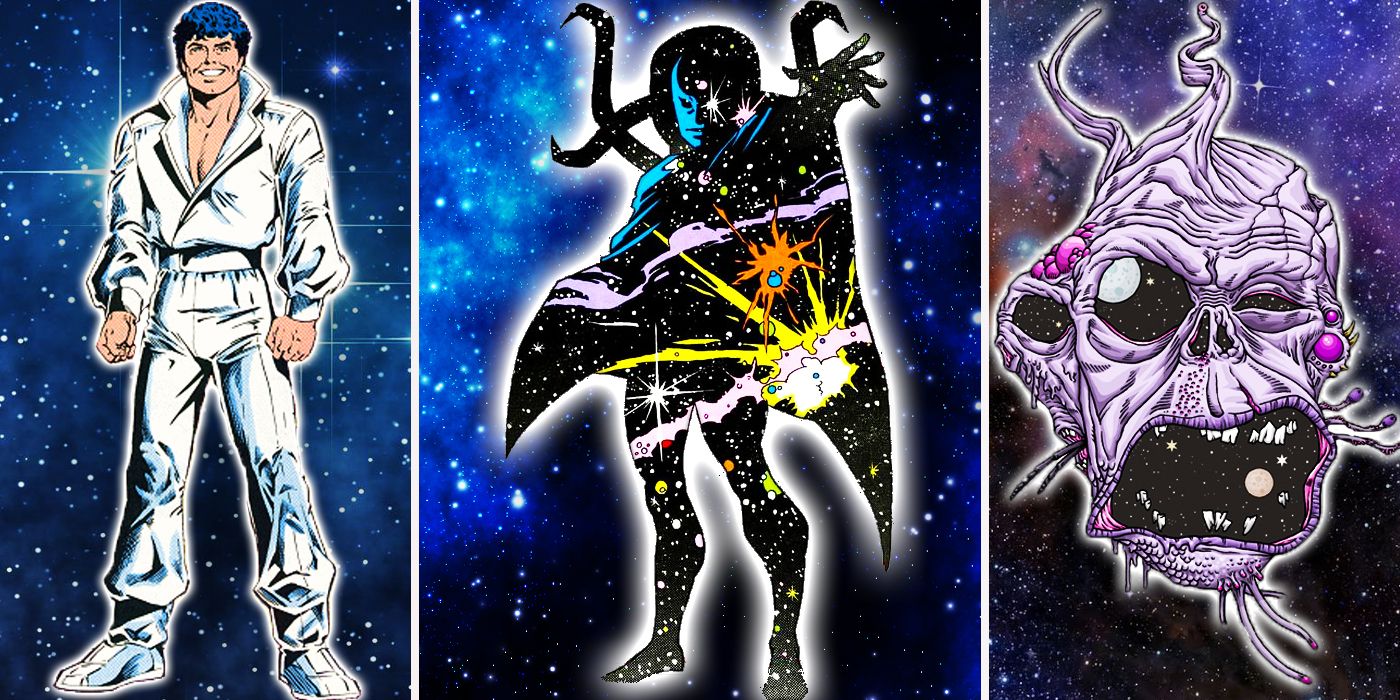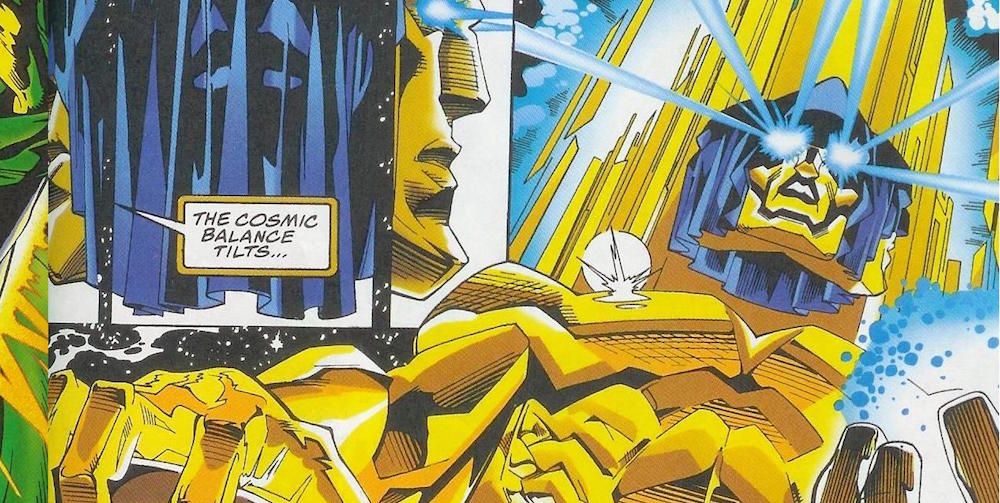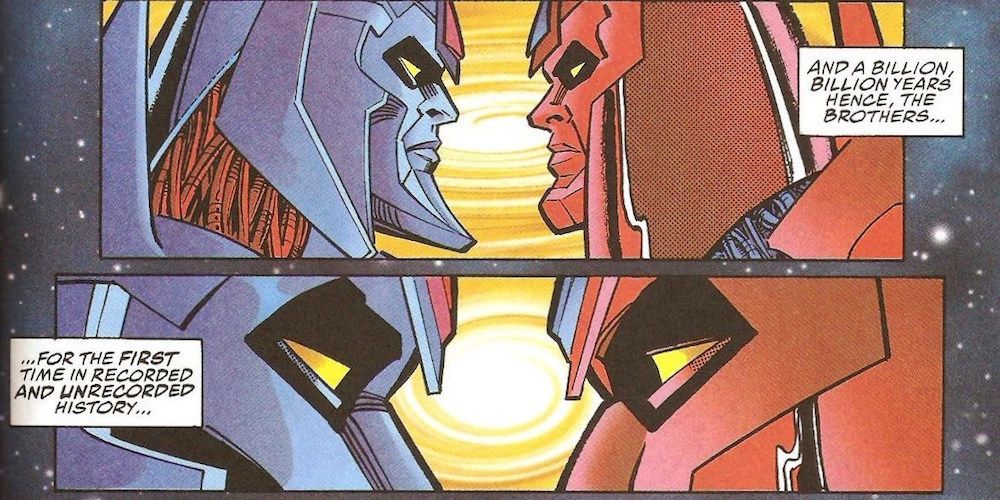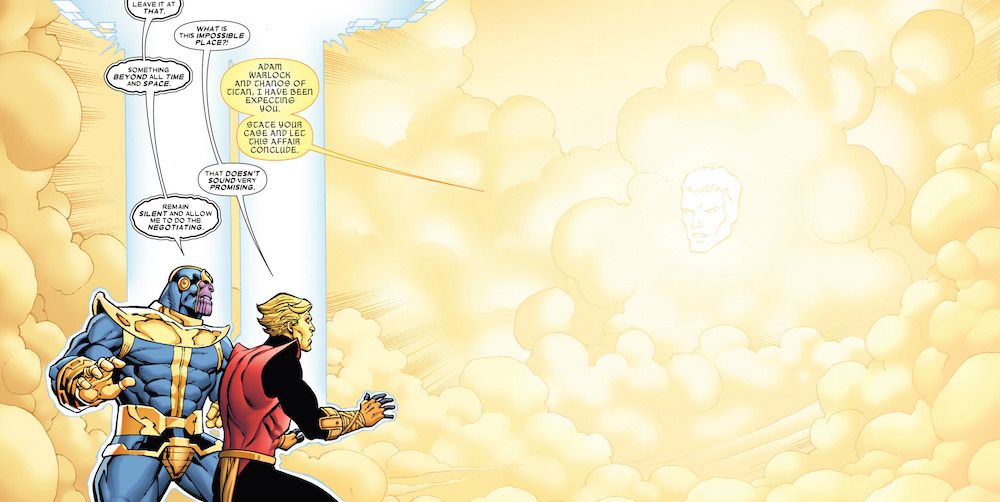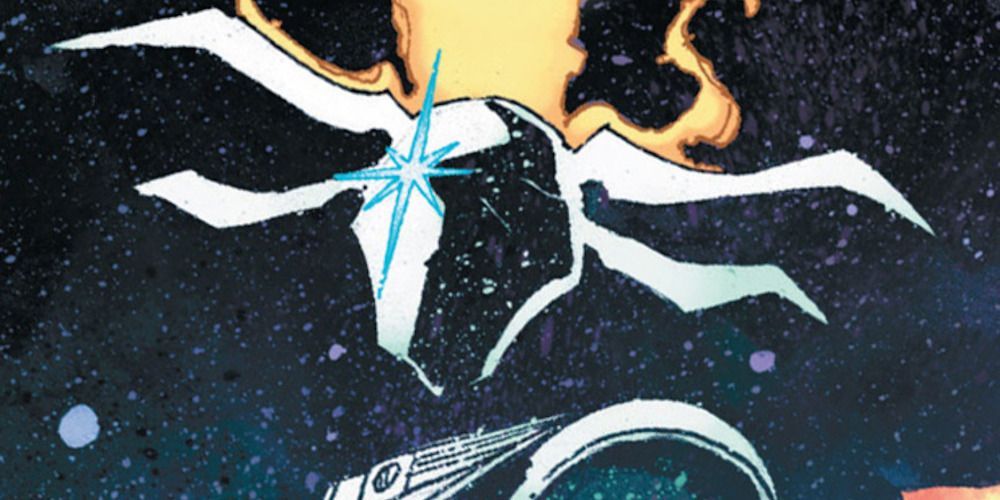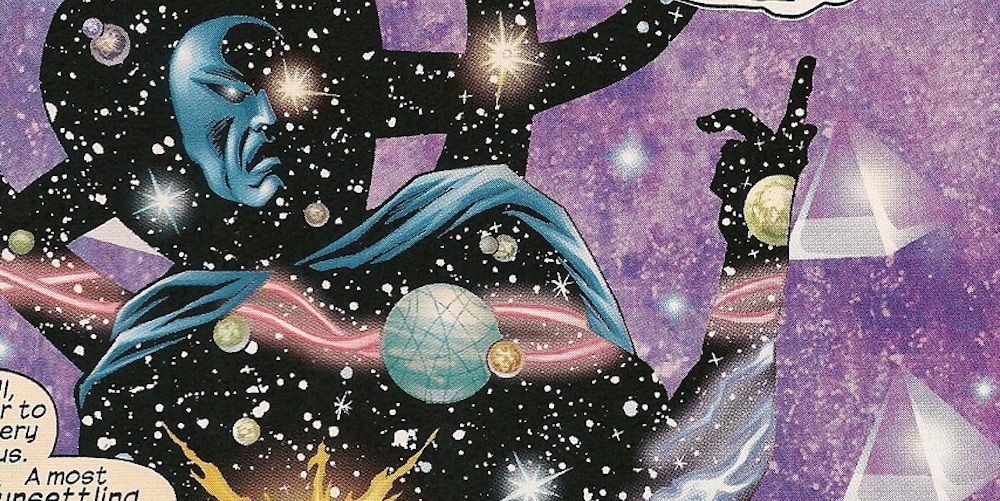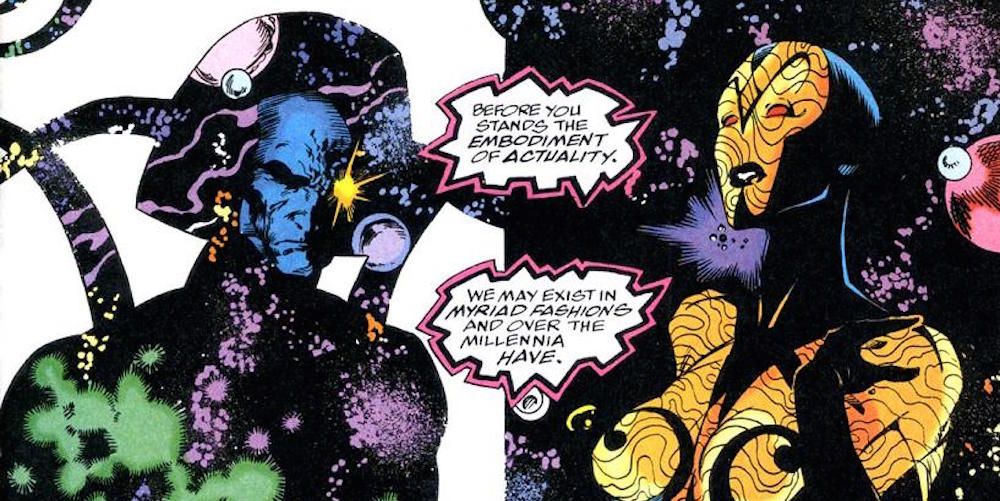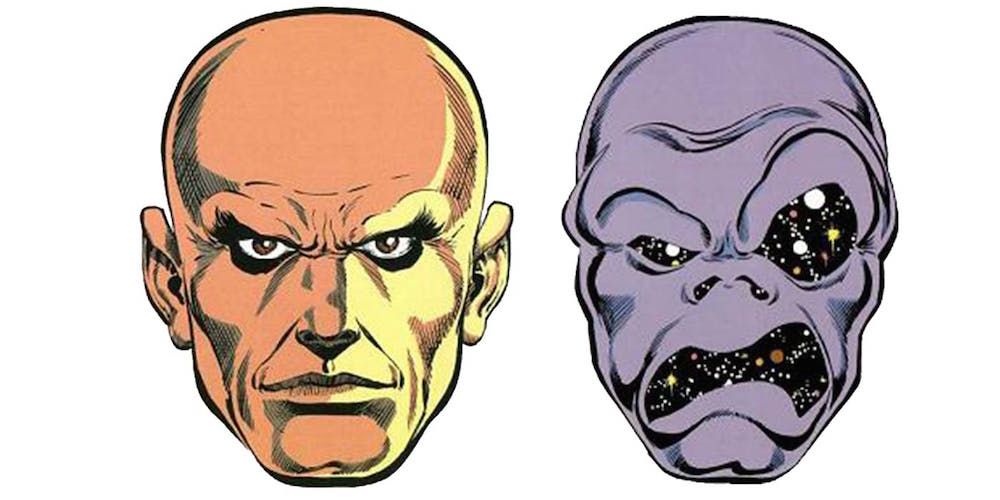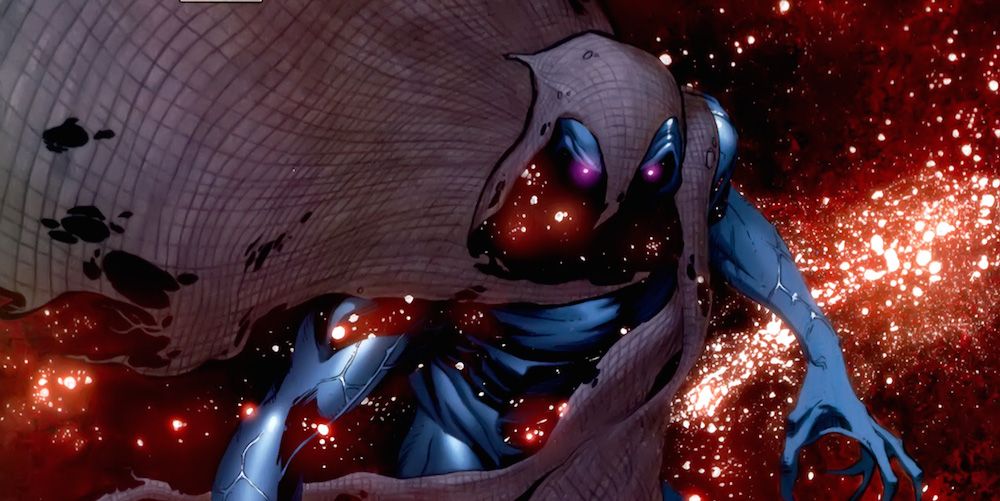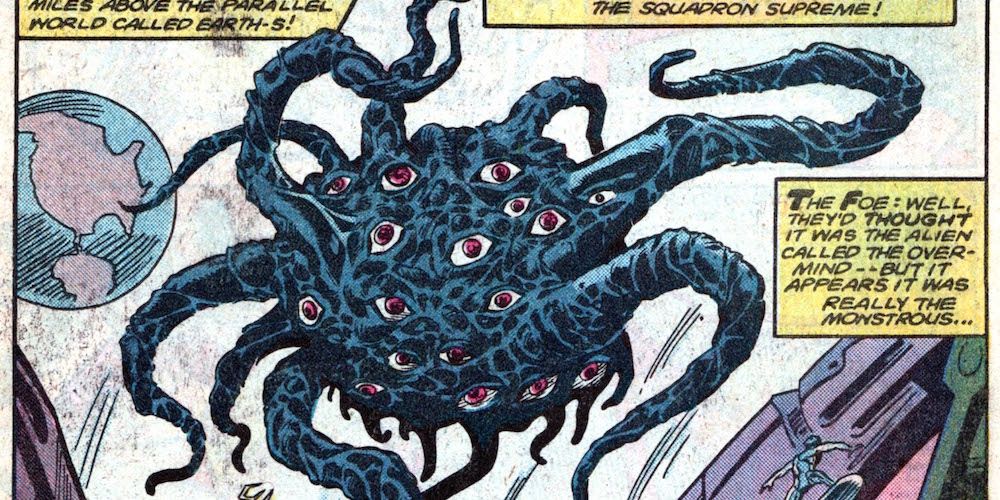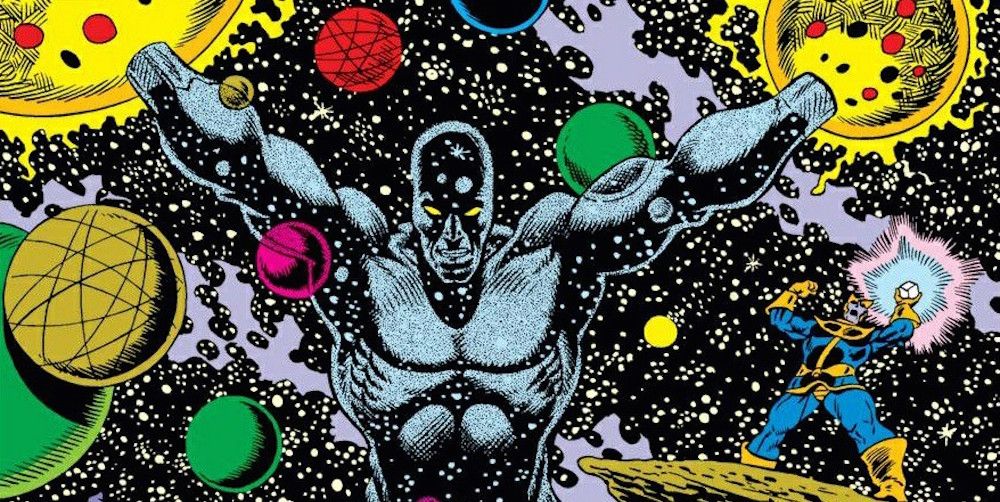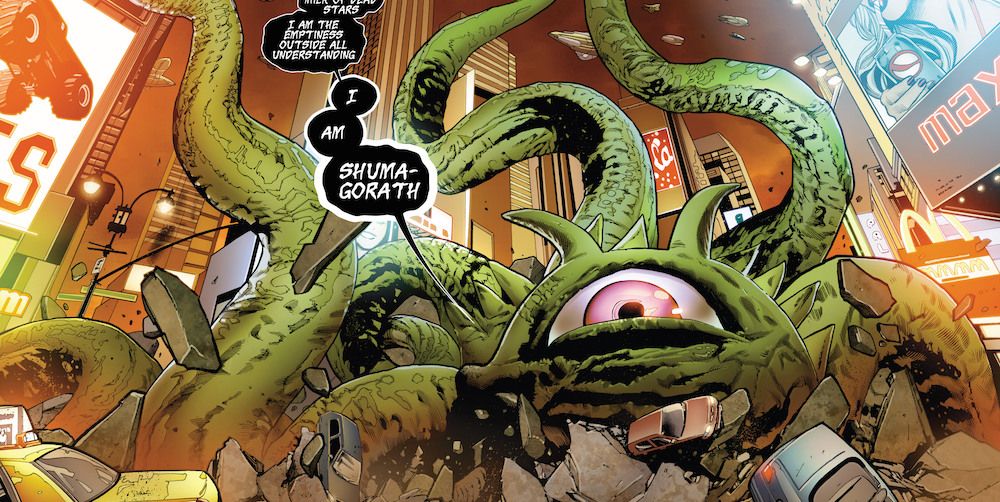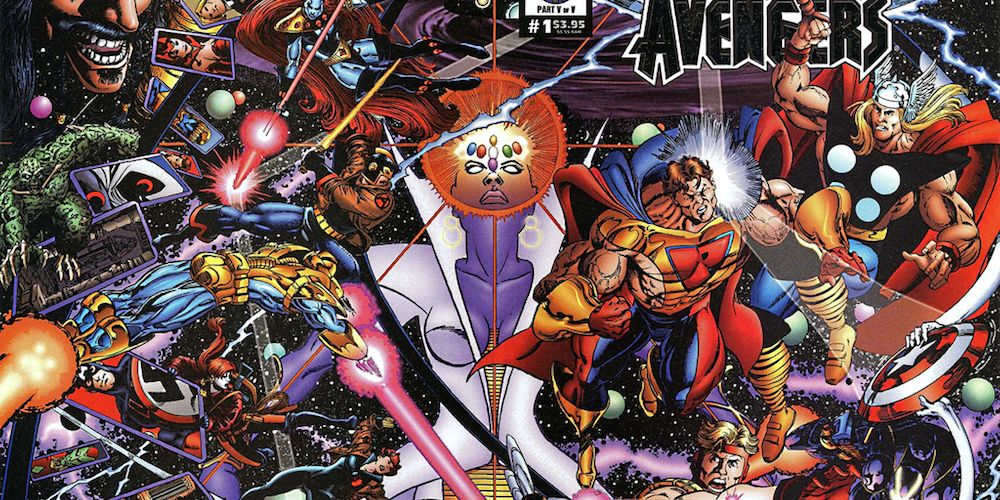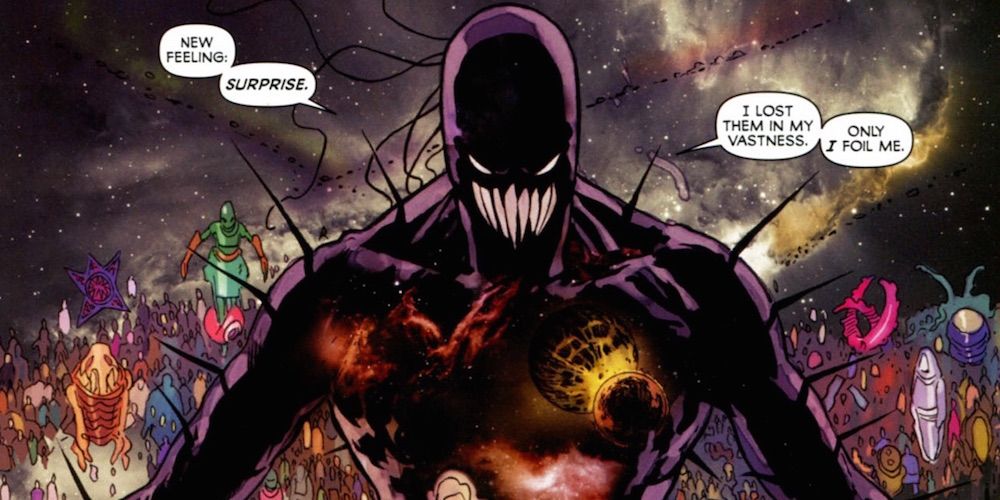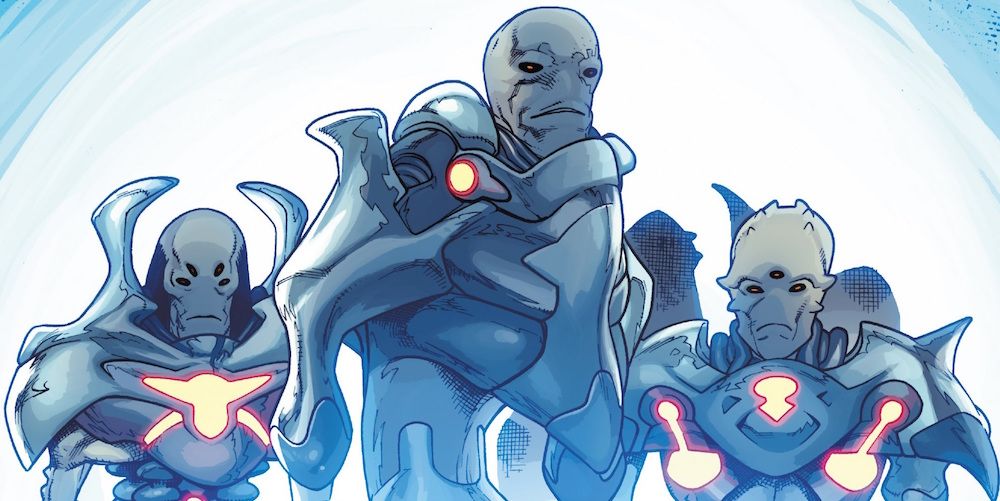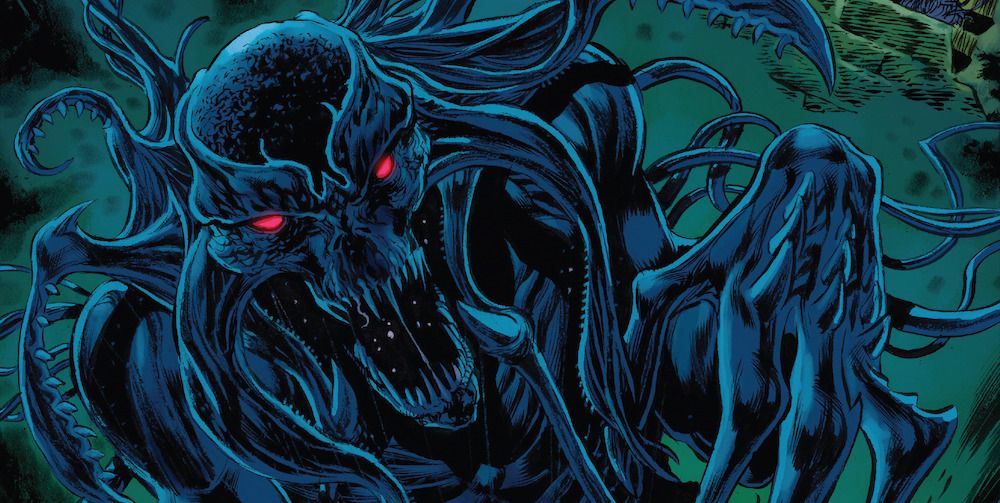It seems like there's nothing that Marvel Studios can't pull off. It doesn't matter how weird or trippy a comic book is, Marvel always seems to be able to bring it to life. A decade ago, many said that properties like Thor or Doctor Strange were just too "out there" for mainstream audiences. When Marvel announced Guardians of the Galaxy (2014), many predicted it would be the studio's first bomb. Despite all of the naysayers, these franchises turned out to be some of Marvel's most successful. Thor may have struggled during his early appearances, but Thor: Ragnarok fully leaned into the franchise's weirdness and was incredibly successful.
Still, while Marvel has successfully brought its cosmic and magical properties to life, there are limits. Some characters just won't work on the big screen. In the comics, there's an entire roster of cosmic gods that are purposely strange and abstract. While Marvel Studios might be able to reference these characters, it will never really be able to bring them to the big screen. The best audiences might see is a heavily watered down version, like Ego, the living Kurt Russell, from Guardians of the Galaxy: Vol 2 (2017). Here are the cosmic gods of Marvel that would be impossible on screen.
* Lord Chaos in feature image by Michael Bukowski.
15 LIVING TRIBUNAL
The Marvel Universe that fans know and love is just one of many. There's an entire multiverse of alternate realities and worlds. Maintaining the balance between all of these realities is the Living Tribunal, a massive entity with a golden body and a multi-faced head. Each face has a different type of hood covering it. It is also usually depicted as having large, glowing eyes. The Tribunal is considered one of the most powerful entities in the Marvel Universe.
It first appeared in Strange Tales #157 (1967) by Stan Lee and Marie Severin, where the Tribunal judged Marvel's Earth as being too dangerous to exist. Luckily, Dr. Strange convinced it that this Earth had the potential for good, and the planet was spared. The problem with a live action depiction is both the design and the story. Would fans be willing to accept a multiverse, let alone a three-faced god who judges them?
14 THE COSMIC BROTHERS
Marvel and DC are rival companies, but that hasn't prevented them from working together from time to time. They're the homes to the biggest comic book characters in the world. Both companies know how much fans want to see Spider-Man and Superman together. In 1996, the two companies teamed up for the ultimate showdown, DC vs Marvel by Ron Marz, Peter David, Dan Jurgens and Claudio Castellini.
The set up was that two cosmic entities, one embodying the Marvel universe and the other embodying DC, challenged each other to a fight. They each picked their best warriors and had them face off. The showdown briefly resulted in Marvel and DC merging, before both brothers decided to set things back. As amazing as it would be, it's highly unlikely that Disney and Warner Brothers would team up for a film version of this.
13 ONE-ABOVE-ALL
Talk about an egotistical name. Of course, this being truly lives up to it. Ever since the earliest appearances of the cosmic elders, there were always clues about one being that was even more powerful than any of the others. It was sometimes referred to as God, other times it was just referred to abstractly. It's hard to say when it first actually appeared in comics. Any appearance of "God" could technically be it (but these are revealed to lesser entities posing).
The Fantastic Four once encountered the One-Above-All after Ben Grimm had been killed in Fantastic Four #508 (2004) by Mark Waid and Howard Porter. The team encounters God (who looks like Jack Kirby) while trying to bring Ben back to life. Considering the religious implications of this character, along with his completely abstract nature, it's likely the MCU would just avoid including it at any point.
12 ENTROPY
While this character may have been referenced in the MCU, he's unlikely to ever actually appear. When Star-Lord entered the temple on the planet Morag, searching for the orb, a mural is briefly visible on one of the walls. Several cosmic entities are depicted, including Entropy, who appears to be involved in the creation of the Infinity Stones. Entropy is the opposite of Eternity, and is the embodiment of destruction.
He first appeared in Captain Marvel #2 (2002) by Peter David and Chris Cross. While he might seem like a evil being, his role in the universe is necessary. He ensures that the cycle of life continues, and through the destruction of one universe, another can be born. Unfortunately for the MCU, this concept is probably too complex to appear as anything other than an Easter Egg in the background.
11 ETERNITY
Marvel used the early appearances of Dr Strange to explore some of its trippiest ideas. In Strange Tales #138 (1965) by Stan Lee and Steve Ditko, Strange seeks out the help of a higher power after Baron Mordo attacks the Ancient One. Mordo is aided by Dormammu, and Strange doesn't believe he can defeat them. He then encounters Eternity, the embodiment of the universe.
Eternity helps advise Strange, who goes on to defeat Mordo. Eternity helped define Marvel's abstract entities, and is often depicted as a body made up of the universe, with a partial face slightly visible. It's a truly unique design, and is a big part of what makes it so memorable. The movie's might be able to reference Eternity, but that's probably it.
10 INFINITY
There is a difference between Eternity and Infinity, at least in the Marvel Universe. Usually presented as a female entity, Infinity embodies all of space. Unlike many other cosmic entities, she is specifically attached to a certain reality, meaning that each alternate universe has its own form of Infinity (unlike the Tribunal or One-Above-All, who exist across the entire multiverse).
Infinity first appeared in Thor 185 (1971) by Stan Lee and John Buscema, and she was later revealed to be the source behind Quasar's Quantum Bands. Her counterpart is Oblivion, one of several personifications of death in the Marvel Universe. While her design isn't as strange as the other abstract entities, it would be too complex to explain the difference between Infinity and Eternity for mass audiences.
9 LORD CHAOS
First appearing in one of the first stories to introduce the full power of the Infinity Gems, Lord Chaos is exactly what he sounds like. The opposite of Master Order, it is the embodiment of chaos (hence the name). It first appeared, along with Master Order, in Marvel Two-In-One Annual #2 (1977) by Jim Starlin. The two entities manipulate Spider-Man and the Thing into confronting Thanos' ship after a recent battle with the Avengers.
The two entities often appear in this way, manipulating events of the universe without truly getting involved themselves. Lord Chaos is typically only shown as a giant, disembodied head. Half is relatively normal while the other half is odd and disfigured. It's hard to imagine that the MCU would introduce a giant, floating and goofy-looking face into its roster of characters.
8 OBLIVION
As previously stated, there are four cosmic beings that embody all of the aspects of the universe: Eternity, Infinity, Death and Oblivion. They cover all of space, all of time, death (obviously) and Oblivion covers "non-existence." These four "siblings" were created at the birth of the universe, and help maintain balance among the elements. Oblivion first appeared in Iceman #2 (1985) by J.M. DeMatteis and Alan Kupperberg.
While closely related to death, Oblivion tends to deal with creatures that, instead of being killed, are wiped from existence. It tends to personify itself as a nondescript male with glowing eyes and a tattered hood and cape. Where exactly does a cosmic abstract being find a cape in its size? Regardless, this concept is definitely way too dark for the relatively lighter tone of the MCU.
7 NULL
There's some weird stuff out in the cosmos. First appearing in The Defenders #103 (1982) by J.M. DeMatteis and Don Perlin, Null is one of the Marvel Universe's darkest entities. It's the embodiment of all the negative emotions of an extinct race of angels. It first manifested itself on Earth's moon, and then traveled down to the planet. It terrorized the town of Christianboro in Virginia. Luckily, the Defenders were able to drive it away.
Unlike most of the abstract cosmic elders, Null doesn't manifest as a humanoid. Instead, it appears as a gaseous cloud with many eyes and tentacles. While certain Marvel heroes can counteract Null's powers, most are ineffective against it. Null has appeared in Marvel cartoons, including Hulk and the Agents of SMASH (2013), but it's simply too strange to appear in the live action films.
6 KRONOS
In the comics, Drax the Destroyer has a very different origin. In Iron Man #55 (1973) by Jim Starlin and Mike Friedrich, Arthur Douglas is killed along with his wife while traveling through the desert when they are attacked by Thanos' ship. Douglas' soul is then used to create Drax by an ancient being known as Kronos. Part of an ancient race known as the Eternals, Kronos was the leader of one of their factions.
During a lab accident (which happen way too often in the Marvel Universe), Kronos destroys his body (along with his city) but his consciousness becomes one with the universe. He's so powerful that he was included as one of the members of the cosmic elders who confronted Thanos when he assembled the Infinity Gauntlet.
5 SHUMA GORATH
Doctor Strange has always had, appropriately enough, the strangest enemies. First appearing all the way back in Marvel Premiere #5 (1972) by Gardner Fox and Sam Kweskin, Shuma Gorath is one of the oldest threats the Sorcerer Supreme has faced (that isn't a cosmic abstract). One of the "Old Ones," Shuma Gorath actually ruled Earth millions of years ago. It was eventually banished, only to return and then be banished again several times.
Shuma Gorath is actually responsible for the Ancient One's death. It had possessed the body of the elderly sorcerer, forcing Dr Strange to kill the body in order to kill the monster. Strange then inherited the title of Sorcerer Supreme. Presenting a creature like Gorath on the big screen without making him look silly would be incredibly hard. It's more likely Marvel Studios would just use villains with less tentacles.
4 NEMESIS
With the Infinity Gems playing a huge role in the biggest Marvel movie yet, it's weird that the most important gem is being left out. In the comics, the gems were all formed when one of the universe's oldest entities committed suicide, and was separated into the different gems. Initially, it was believed that there were six gems, and that the life of the original entity was forever lost.
It turns out, there was a seventh gem that had been hidden in an alternate universe. When the seven gems were reunited, Nemesis was brought back to life. Behind the scenes, Nemesis was created for an inter-company crossover Avengers/Ultraforce (1995) by Glenn Herdling, Angel Medina and M.C. Wyman. While Marvel now owns the Ultraverse comics, it's unclear if it even owns the film rights, or if Marvel Studios would have to share in the profits.
3 AMATSU-MIKABOSHI
Based on actual Japanese mythology, Amatsu-Mikaboshi is an ancient god who is also known as the Chaos King. The Marvel version first appeared in Thor: Blood Oath #6 (2006) by Mike Oeming and Scott Kolins. Like many ancient gods, it ruled over the Earth millenia ago until the intervention of other gods. The ancient entity was then banished to the underworld.
Amatsu-Mikaboshi attempted to conquer the various pantheons of gods after the fall of Asgard. It was stopped by Ares and his son Alexander, the Olympic god of fear. The entity then reappeared during the Secret Invasion storyline, where it teamed up with Earth's gods to battle the Skrull gods. Considering that the MCU version of Asgard is just an advanced race of aliens, it's unlikely Marvel will start introducing actual gods of folklore into its movies anytime soon.
2 THE BEYONDERS
The first Beyonder appeared in the Marvel Universe during one of its most important storylines ever. In Secret Wars (1984) by Jim Shooter and Mike Zeck, many of Earth's heroes and villains are brought to another planet to battle for the ultimate prize. The entity responsible for this identifies itself as the Beyonder. Initially, it was believed that there was only one Beyonder. It would later be revealed that the Beyonder was actually just a child unit of a much more powerful species.
The real Beyonders are an incredibly powerful extra-dimensional race. They were responsible for the reality destroying incursions, and even killed the Living Tribunal and several Celestials. While many fans hope to see a cinematic Secret Wars, it's unlikely the MCU will introduce the entire Beyonder race, and instead look for a simpler way to have all the heroes and villains fight.
1 CHTHON
Marvel has no shortage of demonic entities, but one of the strangest would have to be Chthon. While he had been mentioned before this, Chthon first appeared in Avengers #186 (1979) by David Michelinie and John Byrne. In modern times, Chthon's influence could be felt in the work of the High Evolutionary and the Puppet Master. He placed part of his essence in Wanda Maximoff when she was just a child. He would later fully possess her.
Most recently, Chthon's followers attempted to resurrect the demon using Carnage's body in a story heavily inspired by the works of H.P. Lovecraft. Some elements of this demon have been mentioned in the MCU (such as the Darkhold). Still, it's unlikely that Marvel Studios will start making movies about Lovecraftian horrors. That probably wouldn't sell well for mainstream audiences.

